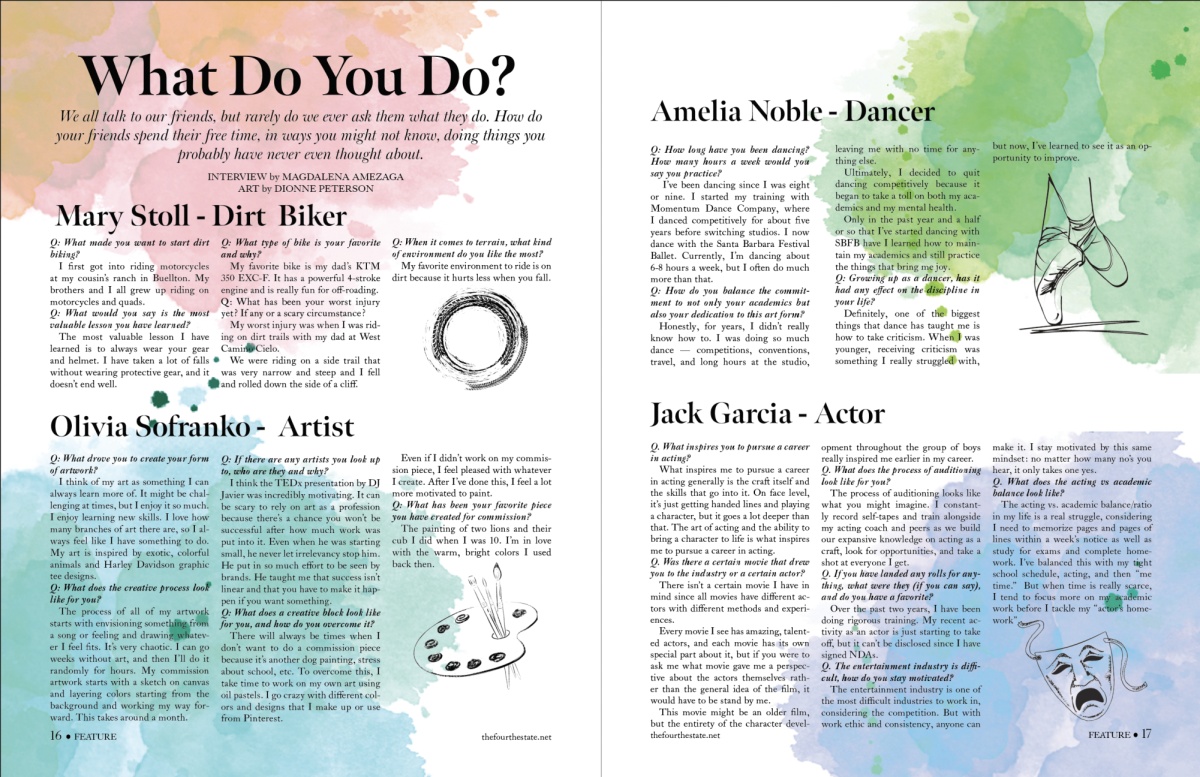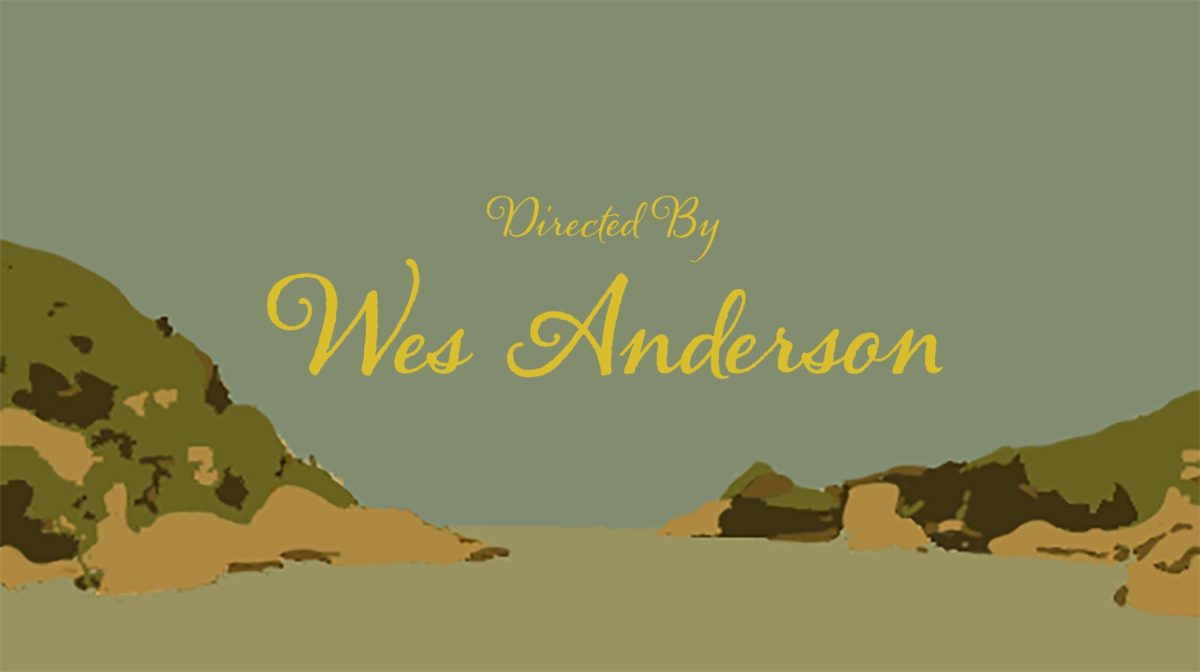Wesley Wales Anderson, better known as Wes Anderson, is an American filmmaker and director renowned for his unique cinematography. His movies feature beautiful stories about the complexity of the human experience. He addresses heavy topics– such as dysfunctional families, war, and death– by balancing the severity of each film’s message with wholesome narratives and relationships, maintaining a tranquil and welcoming atmosphere. Other recurring themes consist of young love and the appreciation of artistry. He is also known for his commentary on postmodernism, questioning the basic assumptions of modern Western philosophy in his films. His “quirky” filmmaking style is renowned for his surrealist worlds, meticulous precision and consistency in his color palettes, and utilization of symmetry to illustrate a visual equilibrium. So, without further adieu, here are my top Wes Anderson film recommendations:
5. The French Dispatch
At number 5 on my list is Anderson’s 2021 “The French Dispatch,” a celebration of journalism and artistry. This film revolves around a fictional publication called The French Dispatch. This American newspaper is set at its outpost in twentieth-century France. The opening scene reveals the death of the editor-in-chief of the publication, and his plan to shut the magazine down following his death. This film not only pays tribute to the legacy of the publicist but also to the staff members. Gathering in this office to discuss what should be published in their very last issue, their conversation opens up storylines for each of the writers and the artists they are profiling. Anderson’s take on social observation runs deep in his narrative, dismantling the complexity of each character he pays tribute to. The film’s variety of filming techniques–such as live-action, animation, flashbacks, and leaps ahead–emphasizes the journalists’ identities themselves.
This hour and forty-eight-minute film takes the form of the magazine’s issue, featuring an obituary, a travel guide, and three long feature articles. The features dive deeper into the varied subjects and personalities of the writers, offering an overwhelming and dazzling amount of details and drama.
This film not only pays tribute to the journalists and the dying art of old-school print publications but to the craft of journalists altogether.
4. The Royal Tenenbaums
Another Anderson masterpiece that is dedicated to dissecting the layers of its characters in a limited amount of time is his 2001 Academy Award-winning film, “The Royal Tenenbaums.” Following the estranged relationships between Royal Tenenbaum, his ex-wife Etheline, and their three children, Anderson once again illustrates the complexity and beauty of human connection.
Set in 1960s New York City, the extraordinary children are just as eccentric as their wealthy parents. The three extraordinary children all share the common trait of being child prodigies: the eldest son is a finance and chemistry genius, the adopted daughter is an acclaimed playwright, and the youngest son is a tennis pro. However, following two decades of betrayal and separation, the children are now tragic adult versions of their former selves. The film begins with an unexpected and sudden family reunion when the insensitive and distant father, Royal, suddenly shows an interest in reconciling with his children and ex-wife by bringing them together through deception and lies.
This twisted and quirky satire depicts themes of parenthood, failure, and forgiveness. Gathered under the same roof after twenty years apart, this dysfunctional family shows promise for redemption with an unexpected positive ending. Anderson’s remarkable take on the theme of family once again displays his deep understanding of the complexity of his character in this oddly feel-good film.
3. Fantastic Mr. Fox
Argued by many critics to be his best film, Anderson’s 2009 “Fantastic Mr. Fox” is an animated adventure and comedy following a family of foxes. This story explores, once again, Anderson’s common theme of the importance of family and friends. The story follows the fatal flaw of the main character, Mr. Fox, an urban family man in a world of talking animals who reads newspapers and struggles to avoid the wrath of his human neighbors. Mr. Fox’s hamartia lies in his struggle to resist the temptations of raiding cellars, killing farm animals, and keeping promises he made to his wife years ago: the “wild animal” side of him.
Mr. Fox, now poor and a father, lives underground with his wife and odd son while maintaining a stable (yet unsatisfyingly, in his opinion) job as a journalist. Avoiding the advice of his badger attorney, he moves his family into a larger home on a hill, with a perfect view of the nearby human neighbors on whom he plans to perform a last raid, a final “hurrah” and tribute to his glory days. His animal instincts and deep aspirations lead to the eventual endangerment of his family, his friends, and his relationships with them all.
Anderson criticizes the ugliness of greed and the dangers of giving into desperate inclinations. The seriousness of this film, with its usual dysfunctional family dynamics and discussion on the purpose of living, is perfectly balanced with lighthearted music and a warm and continuous color scheme. Regarded as one of the top stop-motion animation films of the century, according to Vanity Fair, this story is worth watching for any age group, attracting all audiences with its reflection of the beauty of life and the struggles of the everyday person.
2. Grand Budapest Hotel
Anderson’s 2014 film, “The Grand Budapest Hotel,” is a close second and one of his most phenomenal films, earning eight Oscar nominations, a Golden Globe, and various other awards. Exhibiting his familiar element of featuring the writing field in his films, the story begins with a writer encountering the owner of a high-class hotel, Mr. Zero Moustafa, who goes on to explain his early years as an eager and dedicated junior lobby boy under the guidance of his mentor and loyal friend, concierge Gustave H.
The film then takes us back to the 1930s at the Grand Budapest Hotel, a European ski resort located in Eastern Germany, during its golden years of providing first-class service to prestigious guests. This service includes the oddly close relationships that the concierge has with his female guests. When one of Gustave’s previous hotel guest-lovers dies suddenly, Gustave and Zero find themselves with accusations of murder and art thievery.
The story discusses themes of war and fascism, examining Zero’s journey to Germany as an orphan and refugee. While many heavy topics are strewn about in the plot, Anderson once again illustrates a perfect balance between the harshness of reality with a vibrant color palette, an impressive set design, and playful conversations. Anderson is a master of using the function of color as a storytelling device, littering the screen with soft pinks, purples, and reds.
After an hour and forty minutes of prison breaks, evolving friendships, and a joyous display of young love, the film ends on a nostalgic note reflecting on Zero’s best years of his life.
1. Isle of dogs
Movies about “man’s best friend” always pull at the heartstrings of the animal lovers watching. However, Anderson takes this concept to another level in his 2018 animated film, “Isle of Dogs,” which expresses the beautiful kindness of a boy traveling to find his lost dog, along with presenting deeper themes of friendships and government corruption.
Set in the dystopian 2030s of the fictitious city of Megasaki, Japan, a dog-flu virus ravages the city and spreads through the canine population. An executive decree passed by the feline-loving political party exiles all dogs to a garbage dump referred to as Trash Island, or “Isle of Dogs.” The story follows a pack of domesticated dogs led by a violent and misunderstood stray who fights for scraps and contemplates what has become of his life. Seeing this story unfold in the beautiful art form of stop-motion animation adds to the playful yet melancholy atmosphere of the film. Anderson’s usage of space and symmetry deepens the satirical undertones in the characters’ narratives.
The odyssey begins when 12-year-old Atari, an orphaned nephew and ward of the authoritarian mayor, escapes the city on a miniature plane on the hunt for his guard dog, Spots, the first exile on the island. Crash landing and succumbing to injuries, he gets the assistance of the pack of mongrels and goes on an epic journey to not only reunite with his canine best friend but hopefully end the injustice brought against the beloved pets of Trash Island.
The playful idea of talking animals and dynamics between adolescent relationships are common themes in Anderson’s films but are brought to a new level of heart-wrench in this oddly comforting film. Anderson’s political themes reach new heights in this film, discussing issues of marginalization and internment along with propaganda and distrust of the government. While the story dwells on real-life issues and critiques, this film sheds light on what truly matters in life, making this possibly Anderson’s best film yet.













Rita Ginocchio • Mar 15, 2024 at 5:40 AM
I love Wes Anderson’s films and look forward to each new one coming out. It’s difficult to choose a favorite but The Grand Budapest Hotel and Moonrise Kingdom both come to mind at the moment.